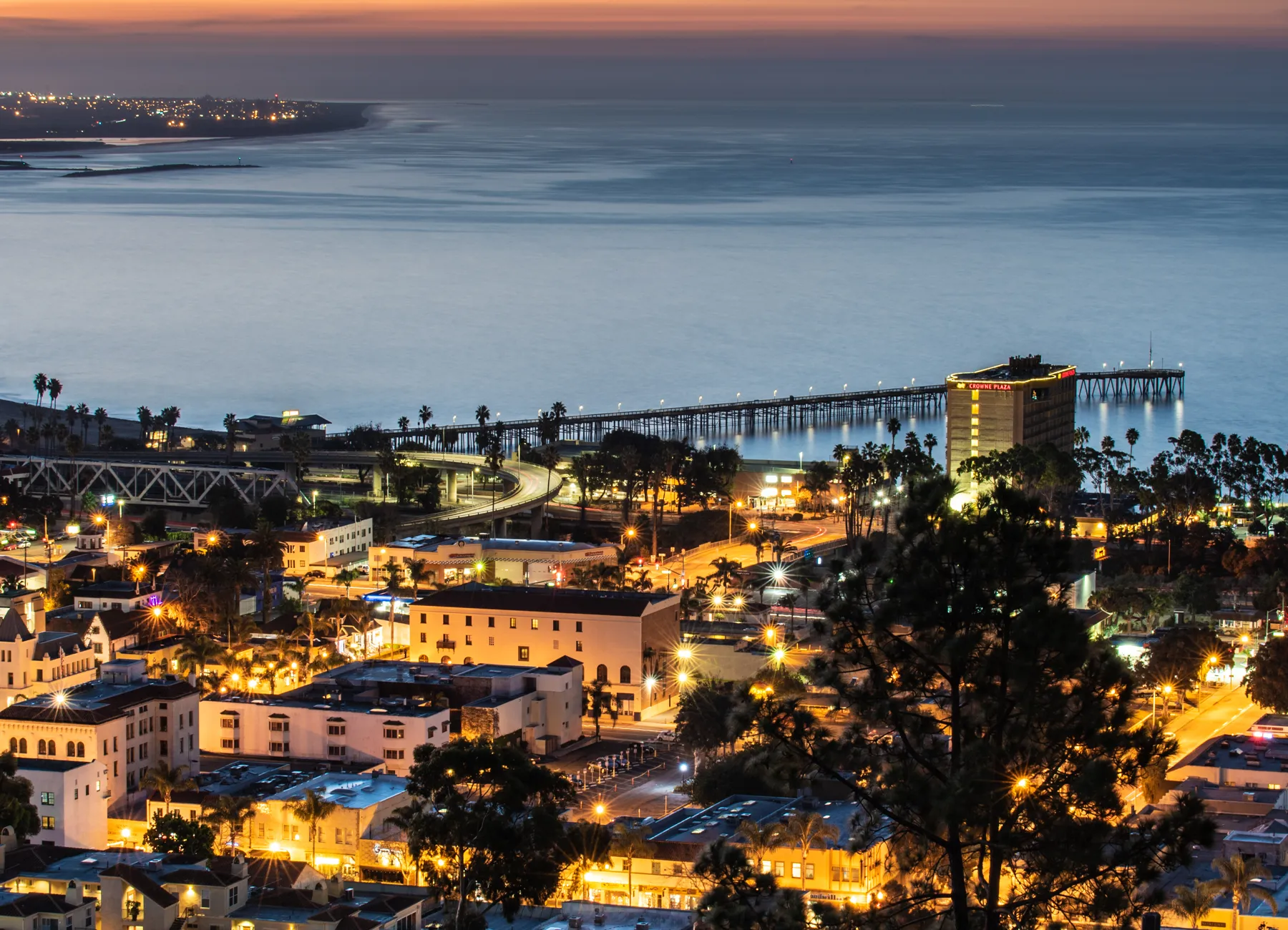Introducing Kevin & Carie Webber – Your Trusted Top Ventura Real Estate Agents
The Webber Team above all makes navigating the real estate market in Ventura a breeze as a result of their expertise. They boast extensive experience. As a result, Carie and Kevin are the perfect partners for your home-buying journey.
1 • Local Market Experts:
Kevin and Carie, are indeed established Realtors in Ventura, and possess in-depth knowledge of the local real estate market. Accordingly they stay continually updated on current trends, pricing, and neighborhood dynamics, therefore they enable you to make well-informed decisions.
2 • Extensive Network and Access to Listings:
The Webber Team has an extensive network of industry professionals. Because of this they have access to other top agents, lenders, inspectors, and contractors, specifically allowing them to find properties that match your criteria in Ventura. Additionally, they have access to exclusive listings and off-market opportunities, providing you with a broader range of choices.
3 • Personalized Guidance and Support:
Both Kevin and Carie provide personalized support throughout the entire transaction. The Webber Estates Team emphatically takes the time to understand your needs, preferences, and also your budget. This therefore ensures that their search and recommendations are tailored to you. Accordingly, they act as your dedicated advocates, and therefore prioritize your interests.
4 • Skilled Negotiators:
Kevin and Carie are highly skilled negotiators, while proficient in navigating real estate deals therefore securing the best terms and prices for you. The team safeguards your interests and subsequently your goals.
5 • Transaction Management and Paperwork:
The Webber Team has a profound understanding of the legal and contractual aspects of real estate transactions. Accordingly they handle all paperwork with precision, therefore ensuring accuracy, meeting deadlines, and providing necessary disclosures. This saves you time, and additionally, reduces stress, thus minimizing the risk of costly mistakes.
6 • Continued Support:
Kevin and Carie remain invaluable resources afterward. Offering recommendations for contractors, home maintenance services, and local amenities, they foster lasting relationships with their clients.
In conclusion, trust in Kevin & Carie Webber – Your Trusted Top Ventura Real Estate Advisors. With their expertise, market knowledge, and personalized guidance, confidently navigate the real estate market with a dedicated partner every step of the way.

The view overlooking downtown Ventura at night is a mesmerizing tapestry of twinkling city lights, casting a warm glow against the darkened backdrop of the Pacific Ocean, creating a picturesque and enchanting scene.
Ventura
Historical Tapestry:
Ventura’s history is a captivating tapestry that unfolds along the scenic Pacific coastline. Originally inhabited by the Chumash Native Americans, the city later became a Spanish mission outpost and developed into a bustling agricultural and trading center. The iconic San Buenaventura Mission, established in 1782, stands as a living testament to Ventura’s historical roots and serves as a cherished landmark in the city. As real estate agents, Carie & Kevin Webber find themselves immersed in the historical charm of Ventura, showcasing properties that echo the city’s early Californian heritage. The Ventura County Museum of History and Art, housed in the historic Ventura County Courthouse, becomes an integral part of their real estate narrative, connecting potential buyers with the unique heritage that defines Ventura.Demographic Diversity:
Ventura, with its eclectic neighborhoods and coastal charm, represents a microcosm of Southern California’s cultural diversity. The current population, estimated at 109,925, paints a portrait of a community that spans various age groups, professions, and cultural backgrounds. Carie & Kevin, as real estate agents, celebrate this diversity, showcasing properties that cater to the unique preferences and needs of a broad spectrum of residents. From the beachside allure of Pierpont Bay to the historic charm of the Midtown district, Ventura’s real estate market caters to a wide range of lifestyles. The city’s diverse housing options, from quaint beach cottages to modern condominiums, ensure that there’s a perfect match for every buyer seeking to call Ventura home.Economic Vitality and Coastal Allure:
Ventura has evolved into an economically vital hub, with a focus on tourism, agriculture, and a burgeoning arts scene. As real estate agents, Carie & Kevin strategically position the city’s economic diversity as a selling point, showcasing not only residential appeal but also the potential for career growth and entrepreneurial opportunities within the community. The city’s coastal allure, with its pristine beaches and a lively harbor, adds another layer of attraction. Ventura’s accessibility to outdoor activities, water sports, and the scenic Channel Islands becomes a key selling point in the real estate narrative, providing potential buyers with the allure of coastal living within reach of urban amenities.Educational Excellence and Family-Focused Amenities:
Ventura stands out as an educational hub within Ventura County. As real estate agents, Carie & Kevin emphasize the presence of reputable schools and educational institutions that contribute to the city’s appeal among families. Ventura Unified School District, known for its commitment to academic excellence, enhances the city’s educational profile, attracting families and contributing to the vibrant atmosphere. The city’s commitment to family-focused amenities, including parks, recreational spaces, and community events, further solidifies its appeal. Ventura’s popular Surfer’s Point Park, a central gathering spot, becomes an integral part of the real estate narrative, showcasing the close-knit community spirit that defines Ventura.Area Schools
Recreation and Quality of Life:
Ventura’s commitment to recreation and quality of life is evident in its numerous parks, hiking trails, and cultural events. The Ventura Botanical Gardens, offering panoramic views of the city and the Pacific Ocean, becomes a key feature in the real estate narrative, highlighting the city’s dedication to natural beauty. As real estate agents, Carie & Kevin emphasize the seamless integration of outdoor activities, presenting Ventura as an ideal destination for those seeking a balance between nature and modern conveniences.Cultural Richness and Community Engagement:
Beyond its natural beauty, Ventura thrives on a rich cultural scene and community engagement. The annual Ventura County Fair and the lively downtown arts district become integral components of the real estate narrative. Carie & Kevin actively participate in these events, connecting with the community and showcasing the vibrant spirit that defines Ventura. These cultural elements serve as selling points, offering not just homes but an invitation into a thriving, engaged community.Conclusion:
In conclusion, Ventura, California, unfolds as a real estate canvas painted with historical significance, demographic diversity, and a commitment to coastal living. Carie & Kevin Webber, as seasoned real estate agents, guide prospective buyers through this landscape, presenting not just houses but homes embedded in the cultural fabric of the city. For Carie & Kevin Webber, real estate in Ventura is not just about transactions; it’s about weaving clients into the vibrant tapestry of a community that continues to thrive along the Pacific coastline.Ventura
- List View
- Map View
-
-
Lot Size5,663 sqft
-
Home Size1,285 sqft
-
Beds3 Beds
-
Baths2 Baths
-
Year Built1960
-
Days on Market1
-
-
-
Lot Size6,534 sqft
-
Home Size1,424 sqft
-
Beds3 Beds
-
Baths2 Baths
-
Year Built1926
-
Days on Market2
-
-
-
Lot Size7,841 sqft
-
Home Size1,818 sqft
-
Beds3 Beds
-
Baths2 Baths
-
Year Built1957
-
Days on Market2
-
-
-
Lot Size3,525 sqft
-
Home Size2,077 sqft
-
Beds3 Beds
-
Baths3 Baths
-
Year Built1969
-
Days on Market2
-
-
-
Lot Size5,999 sqft
-
Home Size1,402 sqft
-
Beds3 Beds
-
Baths2 Baths
-
Year Built1966
-
Days on Market2
-
-
-
Lot Size
-
Home Size908 sqft
-
Beds2 Beds
-
Baths1 Bath
-
Year Built1985
-
Days on Market3
-
-
-
Lot Size
-
Home Size1,494 sqft
-
Beds2 Beds
-
Baths2 Baths
-
Year Built1974
-
Days on Market4
-
-
-
Lot Size6,099 sqft
-
Home Size998 sqft
-
Beds3 Beds
-
Baths1 Bath
-
Year Built1940
-
Days on Market5
-
-
-
Lot Size3,999 sqft
-
Home Size775 sqft
-
Beds2 Beds
-
Baths1 Bath
-
Year Built1954
-
Days on Market5
-
-
-
Lot Size23,958 sqft
-
Home Size5,052 sqft
-
Beds5 Beds
-
Baths4 Baths
-
Year Built1962
-
Days on Market5
-
-
-
Lot Size5,663 sqft
-
Home Size1,225 sqft
-
Beds3 Beds
-
Baths1 Bath
-
Year Built1955
-
Days on Market6
-
-
-
Lot Size2,392 sqft
-
Home Size2,392 sqft
-
Beds3 Beds
-
Baths4 Baths
-
Year Built2024
-
Days on Market6
-
-
-
Lot Size
-
Home Size1,138 sqft
-
Beds2 Beds
-
Baths2 Baths
-
Year Built2002
-
Days on Market6
-
-
-
Lot Size2,614 sqft
-
Home Size810 sqft
-
Beds2 Beds
-
Baths1 Bath
-
Year Built1971
-
Days on Market6
-
-
-
Lot Size1,725 sqft
-
Home Size1,723 sqft
-
Beds3 Beds
-
Baths3 Baths
-
Year Built1985
-
Days on Market6
-
See all Real estate matching your search.
(all data current as of
10/23/2024)
Listing information deemed reliable but not guaranteed. Read full disclaimer.
We represent several of the most beautiful and sought after communities in Southern California. With over 20 years of experience in Real Estate, we can help you buy or sell your home in any of the following locations:
Click on any of the links below to find out more about the City/Community(s) you are interested in.
















